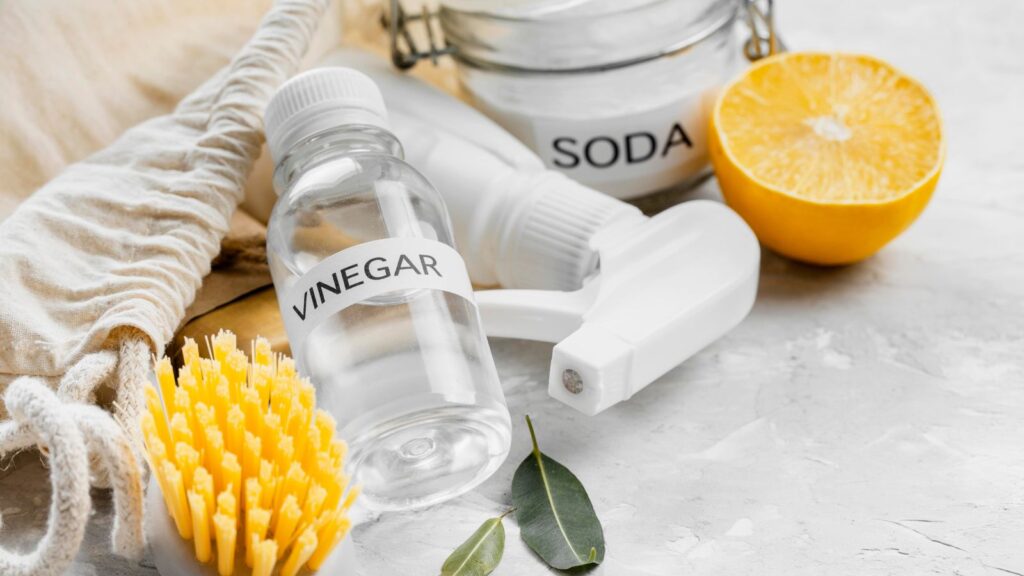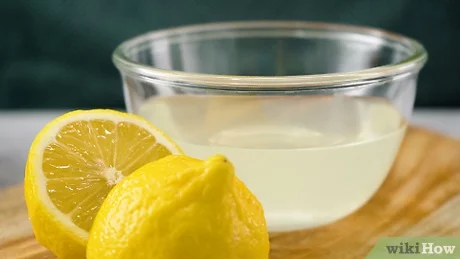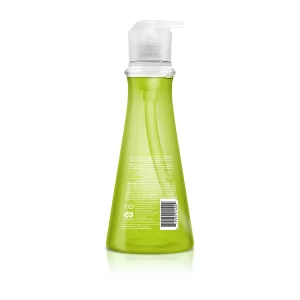Unveiling the Secrets: How to Get Soap Scum Off Glass
Introduction
Glass surfaces can add an elegant touch to any bathroom, but over time, soap scum can mar their beauty. This stubborn film, a result of soap interacting with hard water, can be challenging to remove. Fear not! In this comprehensive guide, we will explore effective methods to get soap scum off glass, restoring your bathroom to its pristine glory.
Understanding Soap Scum
Before diving into the cleaning methods, it’s crucial to understand what soap scum is. Soap scum forms when the fatty acids in soap react with minerals in hard water. This chemical reaction results in a white or cloudy film on glass surfaces, shower doors, and tiles.
Soap scum is not only unsightly but can also become a breeding ground for bacteria and mold if left unaddressed. To keep your bathroom hygienic and visually appealing, regular cleaning and maintenance are essential.
Method 1: Vinegar and Baking Soda

Step 1: Create a Paste
Mix equal parts white vinegar and baking soda to form a thick paste. The acidity of the vinegar helps break down the soap scum, while the abrasive nature of baking soda aids in scrubbing away the residue.
Step 2: Apply and Scrub
Spread the paste onto the glass, focusing on areas with visible soap scum. Use a non-abrasive sponge or brush to scrub the surface gently. Allow the paste to sit for 15 minutes to maximize its effectiveness.
Step 3: Rinse
After the paste has had time to work its magic, rinse the glass thoroughly with water to remove the residue. Use a clean, damp cloth to wipe away any remaining traces of the paste.
This method is highly effective for mild to moderate soap scum buildups and is a budget-friendly, eco-friendly alternative to commercial cleaners.
Method 2: Commercial Cleaners

The market is flooded with commercial cleaners specifically formulated to tackle soap scum. These products often come in spray bottles for easy application. When using commercial cleaners, it’s crucial to follow the manufacturer’s instructions carefully.
Step 1: Choose a Suitable Cleaner
Select a commercial cleaner designed to remove soap scum. Look for products with added benefits like mold and mildew prevention.
Step 2: Apply According to Instructions
Spray the cleaner onto the glass surface, covering areas with soap scum. Let the cleaner sit for the recommended duration specified on the product label. This allows the cleaning agents to penetrate and break down the soap scum.
Step 3: Wipe or Rinse
Use a clean, lint-free cloth or sponge to wipe away the loosened soap scum. In some cases, rinsing the glass with water may be necessary to remove any remaining residue. Ensure the area is well-ventilated during and after the cleaning process.
Commercial cleaners are convenient and often provide quick results. However, be mindful of the chemicals in these products, especially if you have sensitivities or allergies. Ventilate the area and wear protective gloves if needed.
Method 3: Lemon Juice

Step 1: Squeeze Fresh Lemon Juice
Lemons, with their natural acidity, can be effective in cutting through soap scum. Squeeze fresh lemon juice directly onto the affected glass surfaces.
Step 2: Let It Sit
Allow the lemon juice to sit for 10-15 minutes. The acid in the lemon works to dissolve the soap scum, making it easier to wipe away.
Step 3: Wipe and Rinse
Using a soft cloth or sponge, gently wipe the glass surface, concentrating on areas with soap scum. Rinse the glass thoroughly with water to remove any lemon residue.
Lemon juice not only cleans but also leaves a fresh, citrus scent in your bathroom. This method is particularly useful for smaller areas with mild soap scum.
Method 4: Dish Soap and Salt

Step 1: Create a Mixture
Combine dish soap with a pinch of salt to create a thick paste. Dish soap cuts through grease, while salt adds abrasiveness for effective scrubbing.
Step 2: Apply and Scrub
Spread the mixture onto the glass surface, focusing on areas with soap scum. Gently scrub the glass using a non-abrasive sponge or brush.
Step 3: Rinse Thoroughly
After scrubbing, rinse the glass thoroughly with water to remove the paste and any loosened soap scum. Dry the glass with a clean, dry cloth to prevent water spots.
This method is a cost-effective and readily available solution for removing soap scum from glass surfaces. The dish soap helps break down the scum, while salt provides the necessary abrasion for effective cleaning.
Frequently Asked Questions (FAQs)
1. Can I use regular vinegar instead of white vinegar?
Yes, you can substitute regular vinegar for white vinegar in most cleaning solutions. However, white vinegar is often preferred as it is less likely to stain surfaces.
2. How often should I clean soap scum?
Regular cleaning is essential to prevent soap scum buildup. Aim to clean glass surfaces at least once a week to maintain a pristine appearance.
3. Are there preventive measures to avoid soap scum?
Yes, adopting a few preventive measures can help minimize soap scum. Consider using liquid soap instead of bar soap, as liquid soap is less likely to leave residue. Installing a water softener can also reduce the minerals in hard water that contribute to soap scum formation.
4. Can I use abrasive pads or steel wool to remove soap scum?
Avoid using abrasive materials such as steel wool or abrasive pads, as they can scratch and damage the glass surface. Opt for non-abrasive sponges or brushes to ensure safe cleaning.
5. Is it safe to mix different cleaning solutions for soap scum removal?
It is not recommended to mix different cleaning solutions, as this can produce harmful fumes. Stick to one cleaning method at a time and ensure proper ventilation during the cleaning process.
6. Can I use the same cleaning methods on tinted glass?
Exercise caution when cleaning tinted glass, as some cleaning agents may damage the tint. Always test a small, inconspicuous area first before applying any cleaning solution to tinted glass.
7. What should I do if soap scum persists after cleaning?
For stubborn soap scum, consider repeating the cleaning process or using a razor blade at a 45-degree angle to gently scrape off the residue. Exercise caution to avoid scratching the glass.
8. Can I use these cleaning methods on shower tiles?
Yes, these cleaning methods are generally safe for shower tiles as well. However, be mindful of the type of tiles and grout you have, and test a small area first to ensure compatibility.
9. How can I remove soap scum from frosted glass?
Exercise caution when cleaning frosted glass, as abrasive materials or strong acids can damage the frosted finish. Test any cleaning method in a small area first to ensure it doesn’t affect the frosted surface.
10. Why is ventilation important during the cleaning process?
Proper ventilation is crucial when using cleaning agents to avoid inhaling fumes. Adequate ventilation also promotes the drying of cleaned surfaces, preventing the accumulation of moisture that can lead to mold and mildew growth.
Conclusion
With these effective methods and helpful tips, you can bid farewell to soap scum and restore the clarity of your glass surfaces. Regular maintenance is key to preventing soap scum buildup, ensuring that your bathroom maintains its sparkling cleanliness. So, roll up your sleeves and get ready to bring back the shine to your glass surfaces! Remember, a clean bathroom is not only visually appealing but also contributes to a healthier living environment.






More Stories
How To Clean Shower Glass Doors Soap Scum
How To Turn Off Water To Toilet With No Valve
How To Make A Cheap Patio On Grass